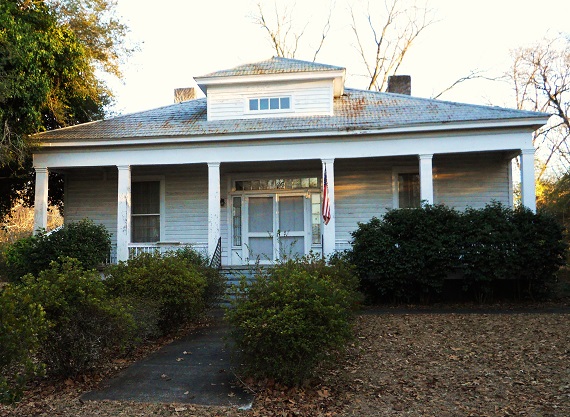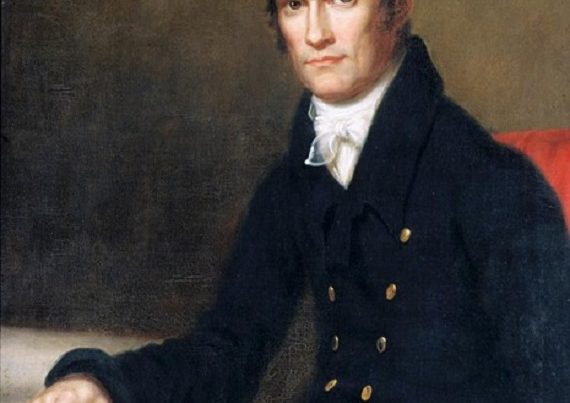About ten years ago, I was invited to participate in a cemetery tour in Auburn, Alabama, because they were desperate, and I actually learned something. I’m pretty sure I upset a lot of innocent progressives with my participation, and I probably garnered some unwanted and stinging criticism for the little local cemetery society, but at least I learned something new about the Confederacy. It was one of those things where people get to tour an old, historic cemetery at night, and actors step out from behind the markers and portray the old fossils buried below. The actors have usually spent dozens of minutes researching their roles on the internet so that they hopefully can deliver a convincing portrayal. Officially prepared scripts are common, but the actors are expected to perform by memory. Costumes are encouraged, but those are usually too difficult to obtain, and nobody can really tell much in the dark, anyway. My wife and I had taken that tour many times before, and always enjoyed it.
On the morning of the scheduled tour day, one of my relatives called to ask if I could help them out of a jam. It seemed that one of the actors selected to portray an historical Auburn icon had gotten sick, and they had exhausted all possibilities of a replacement. Like I said, they were desperate. She told me that I could use the sick actor’s script in my portrayal of William F. Samford, and I happily accepted the challenge. However, when she brought over the script, I was unimpressed. It was very factual, very detached, and very boring. So, I decided to leap onto the information superhighway and find out as much as I could on my own about Mr. William Flewellyn Samford.
The name “Samford” is familiar to people in Auburn, and I just assumed it was the same guy that was a former governor of Alabama for whom Samford Hall on the Auburn campus (near Toomer’s Corner) is named. Boy, was I wrong. That guy was William J. Samford. My guy was his daddy, William F. Samford, and he was a serious pistol ball. The first thing I read about him was that he was called “The Penman of the Secession,” and I was immediately hooked.
William F. Samford moved to Auburn in the 1850’s from my hometown of Tuskegee, where he’d owned and operated the local newspaper there. He tried to obtain ownership of the Montgomery Advertiser newspaper, but fell short and had to settle for running an Auburn newspaper called The Signal. His interest in the newspaper business went back many years to the staunch loyalty of his best friend and idol, William Lowndes Yancey. Yancey was one of the most vitriolic of the “Fire-Eaters” pushing for Southern secession, and was known as The Orator of the Secession. It was he who dubbed Samford “The Penman of the Secession” for widely distributing the voice of Southern rights in a regular printed format. Yancey was often a frequent visitor to Samford’s home in Auburn.
As I continued to read sample after sample of Samford’s writings, I was blown out of my chair. This guy was fast-becoming my newest hero, and I couldn’t WAIT to unleash him on groups of unsuspecting tourists. He even ran for governor of Alabama in 1859 as an independent who refused to campaign (he conducted everything from his front porch in Auburn) and dang near won. One of the most awesome things I read about him was an account that claimed Samford made an argument for secession in his 1859 campaign by using the words “government of the people, by the people, and for the people.” That was a full four years before Lincoln’s Gettysburg Address. I didn’t know if it was true or not, but I didn’t care. I planned to use it.
That night, right there in that dark and cold cemetery, I launched into a fiery performance for the reasonable sensibility of state’s rights and the necessity of secession. I mean I brought that man up from the grave, walked him around, and pounced on each group that stopped by. Nearby, at another part of the cemetery, they were playing “Dixie” at the site of a mass grave for brave Texas volunteers who died in an Auburn hospital and never made it home, and it was the perfect surreal accompaniment for the temporary resurrection of The Penman of the Secession. I rapidly got pretty good at timing my remarks to the phrases of “Dixie.”
But by far, the best part of each performance came when I recited Samford’s original words of “government of the people, by the people, and for the people,” and concluded by telling each group that my words were stolen by that “skunk Abraham Lincoln.” The shocked gasps that erupted from each group was well worth it.
I was told by many of the tourists that my performance was one of the best on the tour. However, I was replaced by the cemetery group for the remainder of the evening tours that weekend, and I’ve never been invited back for any other performances. Apparently, they didn’t appreciate it when I deviated from the script. Also, my wife and I still take that same tour every year, and we’ve noticed that the grave of William F. Samford has remained silent ever since.
But he is not silent in my heart. Not anymore.







